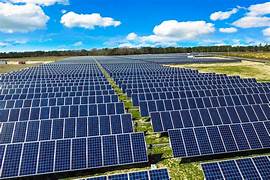Hydrogen Fuel Cell
A fuel cell by definition is an electrical cell, which unlike storage cells can be continuously fed with a fuel so that the electrical power output is sustained indefinitely. They convert hydrogen or hydrogen-containing fuels directly into electrical energy plus heat through the electrochemical reaction of hydrogen and oxygen into water. The process is that of electrolysis in reverse.
Overall reaction: 2 H2(gas) + O2(gas) → 2 H2O + energy
Because hydrogen and oxygen gases are electrochemically converted into water, fuel cells have many advantages over heat engines.
These include: High efficiency, virtually silent operation. And if hydrogen is the fuel, there are no pollutant emissions. If the hydrogen is produced from renewable energy sources then the electrical power produced can be truly sustainable.
The two principle reactions in the burning of any hydrocarbon fuel are the formation of water and carbon dioxide. As the hydrogen content in a fuel increases, the formation of water becomes more significant, resulting in proportionally lower emissions of carbon dioxide. As fuel use has developed through time, the percentage of hydrogen content in the fuels has increased. It seems a natural progression that the fuel of the future will be 100% hydrogen.

Where Will The Hydrogen Come From?
Hydrogen can be produced sustainably with no emission of carbon dioxide from renewable energy systems. An example of such a system is the use of a solar panel, a wind turbine or a micro-hydro generator to convert the radiant energy of sunlight into electrical power, which drives an electrolyzer. The electrolyzer breaks apart water producing hydrogen and oxygen gases. The hydrogen is stored for use by the fuel cell and the oxygen is released into the atmosphere. Thus when the sun shines, the wind blows or the water flows, the electrolyser can produce hydrogen. A power system incorporating hydrogen from renewable sources and a fuel cell is a closed system, as none of the products or reactants, water, hydrogen and oxygen are lost to the outside environment. The water consumed by the electrolyzer is converted to gases. The gases are converted back to water. The electrical energy produced by the solar panel is transferred to chemical energy in the form of gases. The gases can be stored and transported, to be reconverted back to electricity.
Fuel Cell Application
- Transportation
- Distributed power generation
- Residential Power
- Portable Power
Benifits
Fuel cells are efficient: They convert hydrogen and oxygen directly into electricity and water, with no combustion in the process. The resulting efficiency is between 50 and 60%, about double that of an internal combustion engine.
Fuel cells are clean: If hydrogen is the fuel, there are no pollutant emissions from a fuel cell itself, only the production of pure water. In contrast to an internal combustion engine, a fuel cell produces no emissions of sulphur dioxide, which can lead to acid rain, nor nitrogen oxides which produce smog nor dust particulates.
Fuel cells are quiet: A fuel cell itself has no moving parts, although a fuel cell system may have pumps and fans. As a result, electrical power is produced relatively silently. Many hotels and resorts in quiet locations, for example, could replace diesel engine generators with fuel cells for both main power supply or for backup power in the event of power outages.
Fuel cells are modular: That is, fuel cells of varying sizes can be stacked together to meet a required power demand. As mentioned earlier, fuel cell systems can provide power over a large range, from a few watts to megawatts.
Fuel cells are environmentally safe: They produce no hazardous waste products, and their only by-product is water.
Electrical Power: Fuel cells may give us the opportunity to provide the world with sustainable electrical power.

